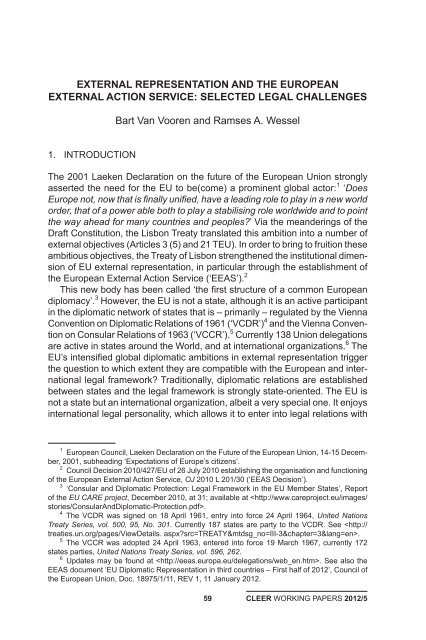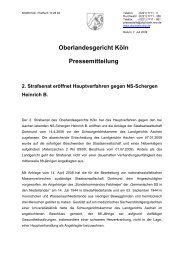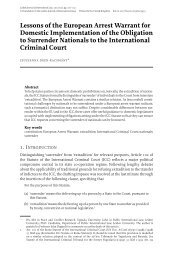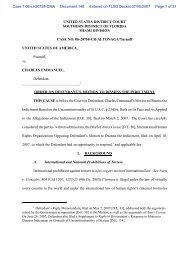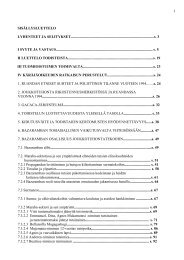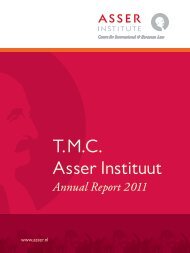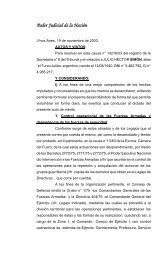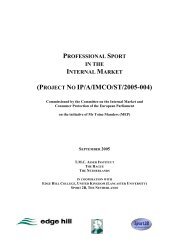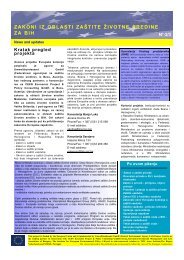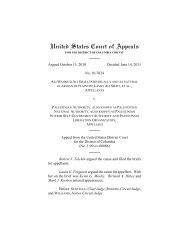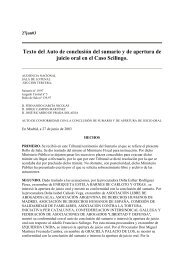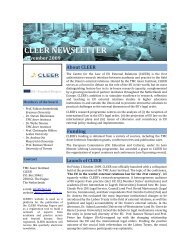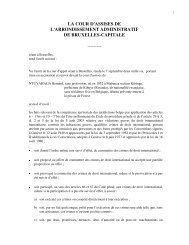Principles and practices of EU external representation - TMC Asser ...
Principles and practices of EU external representation - TMC Asser ...
Principles and practices of EU external representation - TMC Asser ...
You also want an ePaper? Increase the reach of your titles
YUMPU automatically turns print PDFs into web optimized ePapers that Google loves.
External <strong>representation</strong> <strong>and</strong> the EEAS: Selected legal challenges<br />
External <strong>representation</strong> <strong>and</strong> the European<br />
External Action Service: selected legal challenges<br />
Bart Van Vooren <strong>and</strong> Ramses A. Wessel<br />
1. Introduction<br />
The 2001 Laeken Declaration on the future <strong>of</strong> the European Union strongly<br />
asserted the need for the <strong>EU</strong> to be(come) a prominent global actor: 1 ‘Does<br />
Europe not, now that is finally unified, have a leading role to play in a new world<br />
order, that <strong>of</strong> a power able both to play a stabilising role worldwide <strong>and</strong> to point<br />
the way ahead for many countries <strong>and</strong> peoples?’ Via the me<strong>and</strong>erings <strong>of</strong> the<br />
Draft Constitution, the Lisbon Treaty translated this ambition into a number <strong>of</strong><br />
<strong>external</strong> objectives (Articles 3 (5) <strong>and</strong> 21 T<strong>EU</strong>). In order to bring to fruition these<br />
ambitious objectives, the Treaty <strong>of</strong> Lisbon strengthened the institutional dimension<br />
<strong>of</strong> <strong>EU</strong> <strong>external</strong> <strong>representation</strong>, in particular through the establishment <strong>of</strong><br />
the European External Action Service (‘EEAS’). 2<br />
This new body has been called ‘the first structure <strong>of</strong> a common European<br />
diplomacy’. 3 However, the <strong>EU</strong> is not a state, although it is an active participant<br />
in the diplomatic network <strong>of</strong> states that is – primarily ‒ regulated by the Vienna<br />
Convention on Diplomatic Relations <strong>of</strong> 1961 (‘VCDR’) 4 <strong>and</strong> the Vienna Convention<br />
on Consular Relations <strong>of</strong> 1963 (‘VCCR’). 5 Currently 138 Union delegations<br />
are active in states around the World, <strong>and</strong> at international organizations. 6 The<br />
<strong>EU</strong>’s intensified global diplomatic ambitions in <strong>external</strong> <strong>representation</strong> trigger<br />
the question to which extent they are compatible with the European <strong>and</strong> international<br />
legal framework? Traditionally, diplomatic relations are established<br />
between states <strong>and</strong> the legal framework is strongly state-oriented. The <strong>EU</strong> is<br />
not a state but an international organization, albeit a very special one. It enjoys<br />
international legal personality, which allows it to enter into legal relations with<br />
1 European Council, Laeken Declaration on the Future <strong>of</strong> the European Union, 14-15 December,<br />
2001, subheading ‘Expectations <strong>of</strong> Europe’s citizens’.<br />
2 Council Decision 2010/427/<strong>EU</strong> <strong>of</strong> 26 July 2010 establishing the organisation <strong>and</strong> functioning<br />
<strong>of</strong> the European External Action Service, OJ 2010 L 201/30 (‘EEAS Decision’).<br />
3 ‘Consular <strong>and</strong> Diplomatic Protection: Legal Framework in the <strong>EU</strong> Member States’, Report<br />
<strong>of</strong> the <strong>EU</strong> CARE project, December 2010, at 31; available at .<br />
4 The VCDR was signed on 18 April 1961, entry into force 24 April 1964, United Nations<br />
Treaty Series, vol. 500, 95, No. 301. Currently 187 states are party to the VCDR. See .<br />
5 The VCCR was adopted 24 April 1963, entered into force 19 March 1967, currently 172<br />
states parties, United Nations Treaty Series, vol. 596, 262.<br />
6 Updates may be found at . See also the<br />
EEAS document ‘<strong>EU</strong> Diplomatic Representation in third countries – First half <strong>of</strong> 2012’, Council <strong>of</strong><br />
the European Union, Doc. 18975/1/11, REV 1, 11 January 2012.<br />
59<br />
CLEER WORKING PAPERS 2012/5


